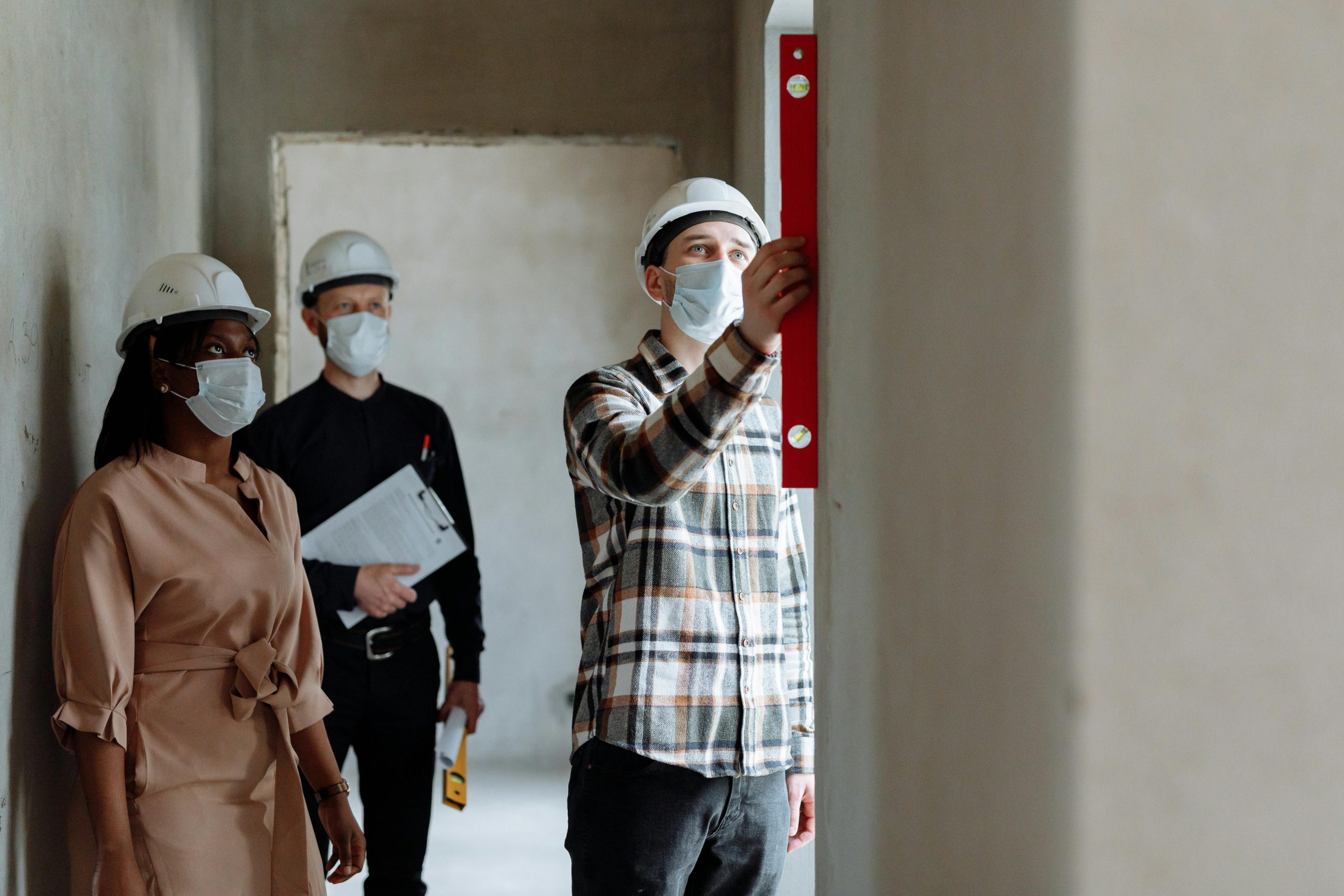Do You Operate or Manage a Warehouse?
Did you know that over the last few years, warehouse injuries and deaths have increased, making it a serious safety concern for workers.
This article is intended to highlight the need for effective Health and Safety Management in warehouses.
No matter the nature of your business or the size of your warehouse, effective Health and Safety Management in this working environment is essential to ensure the risks to people is controlled in accordance with legal requirements, industry guidelines and established best practice.
Warehousing and storage pose several potential dangers that employers must address to ensure the safety of workers. Some common perceived dangers include Manual Handling, workers in warehouses often lift and move heavy items, increasing the risk of musculoskeletal injuries. Employers must provide training on safe lifting techniques and may need to introduce mechanical aids such as forklifts or conveyor belts to reduce manual handling risks.
When used, forklift trucks are essential in warehouses but can be very hazardous if not operated correctly. Training for forklift operators is crucial to prevent accidents such as collisions, tipping, or loads falling from heights.
Warehouses often have high shelving and mezzanine levels, posing a risk of falls for workers. Employers must install guardrails, safety gates, and provide training on working at heights to minimize this risk.
Spills, cluttered walkways, and uneven flooring increase the risk of slips, trips, and falls in warehouses. Employers should maintain clean and tidy work areas, use anti-slip flooring, and ensure adequate lighting to prevent accidents.
Warehouses often store combustible and flammable materials or goods that can contribute to the rapid spread of fire and smoke. Employers must implement fire safety measures such as adequate fire detection and alarm systems, fire exits, and staff training in fire evacuation procedures.
Workers in warehouses may come into contact with hazardous substances such as chemicals or substances generated by process such as dust and fume. Employers must provide appropriate personal protective equipment (PPE), ventilation systems, and training on the safe use, handling and storage of hazardous materials.
Machinery and equipment used in warehouses, such as conveyor belts and packaging machines, can pose crush, entanglement, or cutting hazards if not properly guarded or maintained. Regular inspections, maintenance, and training are essential to mitigate these risks.
In busy warehouses, there is a risk of accidents involving vehicles such as trucks, vans, and delivery vehicles. Employers should establish designated traffic routes, pedestrian walkways, and use signage or barriers to separate vehicle and pedestrian areas.
Addressing these perceived dangers through risk assessments, appropriate control measures, training, and regular inspections can help create a safer working environment in warehouses and storage facilities, ensuring compliance with UK health and safety legislation.
Often, due to the immense size of most warehouses as well as the number of hazards, it makes it all the more important to keep up to date with fire safety training.
Regular fire safety training drills so that everyone knows the procedure in case a fire really does break out should be undertaken. This also gives you the chance to check that all fire alarms are in working order. Ensure that all employees as well as visitors are aware of possible fire risks in the warehouse. A good idea is to appoint someone to be in charge of implementing preventative measures.
Vehicle Safety in Warehouses
Warehouse vehicles such forklift trucks of which they are many variations depending on the need and application of the business and premises are indispensable in many warehouses to move stock and materials from one place to another. Training should be given not only to those operating the vehicles, but also those that come into contact with them (pedestrian/vehicular conflict) so that all can work effectively and safely together.
In our experience as H&S Advisors and Consultants, enforcement officers will be very thorough in seeking evidence that operators of lift trucks are suitably trained. Employers are required to provide training and testing for all lift-truck operators they employ both new and existing. You should ensure your health and safety auditing process checks that operators training is up to date and suitable records are also up to date.
As with all work equipment, the law requires that lift trucks are regularly maintained and inspected by way of a documented pre-shift check (if you operate your business on a shift basis, these checks should be made at the start of each shift), a system for reporting defects and ensuring remedial work is carried out, a planned routine maintenance system is in place and a periodic thorough examination and regular of safety inspection.
By ensuring there is a speed limit that is no higher than 5mph and make sure to service the vehicles regularly to decrease any risks.
Storage and Racking Safety in Warehouses
As warehouses vary considerably in size and the type of goods and materials stored and moved within them, invariably there will be a variety of systems used for storing them, from pallets to static racking. The method of storage largely depends on the shape and fragility of the article. Long thin articles are generally stored in some form of horizontal racking and box-shaped articles or loose materials in sacks built into a stack, with suitable bonding to ensure stability.
Design and Installation Safety in Warehouses
You must ensure storage areas are specifically designated and clearly marked.
Consider load capacities and ensure racking is capable of supporting the loads placed on it.
The layout of the storage and handling areas should be carefully considered to avoid tight corners, awkwardly placed doors, pillars, uneven surfaces and changes of gradient. Your design plans should always consider the need for guard rails to protect pedestrian routes set up to avoid vehicular/pedestrian conflict.
Ensure racking systems are designed and installed by competent persons according to manufacturers' instructions and relevant standards.
Consider load capacities and ensure racking is capable of supporting the loads placed on it.
Inspection and Maintenance in Warehouses
Regularly inspect racking systems for signs of damage or wear and tear. This should include checks for structural damage (e.g., bent beams, damaged uprights etc.) and loose or missing components.
Overloading or Incorrect Use
Schedule periodic inspections by a competent person. The frequency of these inspections should be based on risk assessment but typically should be at least once a year and very importantly, keep records of all inspections, maintenance, and repairs carried out.
Training and Information
Provide employees with adequate training on the safe use of racking systems, including proper loading techniques, recognition of damage and defects and reporting procedures for faults or damage.
You must also ensure employees are provided with information and instruction on the risks associated with racking systems and the importance of following safe systems of work.
Safe Loading and Unloading
As part of the safe systems of work for loading and unloading racking systems you need to ensure loads are evenly distributed and do not exceed the racking’s load capacity.
Use the correct type and appropriate equipment (e.g., forklifts) operated by trained personnel.
Ensuring there is adequate lighting in the storage area.
Signage and Labelling
Clearly mark load capacities and any restrictions on your racking systems.
Use appropriate signage to indicate maximum load capacities, safe working practices, and emergency procedures.
Reporting and Repairing Damage
Establish a clear reporting procedure for any damage or defects identified.
Ensure that damaged racking is taken out of service immediately and repaired or replaced before being used again.
Slips and Trips
There are several precautions that can be taken to ensure slips and trips are kept to a minimum. Make sure all cords are gathered up and taped down or placed in covers. Shelves need to be stacked properly so that nothing can fall off and aisles need to be kept clear to reduce tripping hazards.
Welfare Facilities
As with all types of workplaces, when employees take a break, they need somewhere safe and comfortable to rest, prepare and heat food etc. It is also a legal requirement to provide toilets even if your warehouse does not have employees and just welcomes visiting drivers. You could always go one step further and offer showering facilities for your employees especially if the work is physically demanding and they may need to cool down afterwards.
Lighting and Temperature
When it comes to ensuring that the warehouse is well lit, a minimum lighting level of 100 Lux is required when the area is open. If the area is continuously manned, the minimum increases to 200 Lux. Legislation states a minimum of 16°C unless the work is physically demanding, then the minimum decreases to 13°C.
Handling Goods
Picking up stock and moving it around can turn disastrous very quickly if the proper training is not provided. Control measures should be put in place so that employees do not hurt themselves such as straining a muscle or putting their back out. Make forklifts and trolleys available to lessen the amount of manual lifting and carrying involved.
Personal Protective Equipment (PPE)
It is a legal requirement, normally as identified through the risk assessment process, that warehouse employees are provided with the appropriate PPE so they can do their job properly and safely. PPE can include hi visibility jackets or vests, suitable head protections e.g., hard hats/bump caps, eye protection, safety footwear i.e. with steel toe caps and steel midsoles if the need is identified, gloves, masks/respirators, hearing protection etc.
Summary
Employers must ensure that storage racking systems are properly designed, installed, inspected, maintained, and used. Regular training, risk assessments, and adherence to legislation and guidance are essential to maintaining safety. By following these measures, you can help prevent accidents and ensure a safe working environment.
For detailed guidance, employers can refer to the HSE website and specific industry standards like those from SEMA.
Compliance with Standards and Guidance
Follow relevant British Standards, such as BS EN 15635:2008 for the application and maintenance of storage equipment, and the Storage Equipment Manufacturers Association (SEMA) guidelines.
Adhere to the HSE’s guidance on warehousing and storage (HSG76).
If you need advice on the health and safety within a Warehouse or you need a second pair of eyes on your current practices and processes contact us on 033 33 215 005 or email websiteenquiries@wirehouse-es.com






